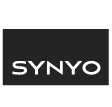 https://www.synyo.com/wp-content/uploads/SYNYO-NEWS-featured-image-NEW01009002EN.png
400
459
leo
https://www.synyo.com/wp-content/uploads/2017/09/synyo-logo.png
leo2025-08-01 13:48:032025-10-20 13:50:29METEOR Programme development and work package and outreach updates
https://www.synyo.com/wp-content/uploads/SYNYO-NEWS-featured-image-NEW01009002EN.png
400
459
leo
https://www.synyo.com/wp-content/uploads/2017/09/synyo-logo.png
leo2025-08-01 13:48:032025-10-20 13:50:29METEOR Programme development and work package and outreach updatesMIICT

MIICT: Defining the design frames for the IMMERSE platform development and implementation
Design Frames are practical techniques used in co-design and co-creation as well as projects focussing on human-centred design, where future system users contribute to the definition of ICT solutions’ functional requirements. The MIICT design frames define the major challenges to be overcome at each pilot location and generally throughout Europe to enhance migrant’s integration in local communities and support the accessibility of public services
Design frames are following the co-creation approach and represent the core of the framework that is used for designing the IMMERSE system. The design frames for MIICT are building on the requirements analysis conducted through interviews as well as on the multi-phase co-creation workshop conducted in the pilot sites.
The design frames were produced as part of the framing and case studies definition. The process was implemented in an iterative way that included nine dedicated steps, where the design frames were continuously tested and revised. This procedure helped to define discrete sets of functional requirements of ICT solutions that contributed directly to the ultimate objective of enhancing migrants’ integration.
The steps include the specification of the objective, the definition of the initial design questions, the definition of the impact areas, the refinement of the design questions at pilot locations, the identification of challenges at pilot locations, the proposition of major possible solutions, the consideration of context and constraints, and the revision of solutions against the background of the context, constraints and the ultimate objective.
Through the design frames definition, the specific workflows for each identified challenge and hence service shaped the general outline of the IMMERSE platform. Each end user is intended to have access to each of the pillars – depending if they would like to either receive more information or to have access to certain tailor-made services. The users can select the country as well as the language. They can navigate through the features of the platform that are either publicly accessible or that require registration and a user profile.
These features, which have been defined in the iterative requirements and co-creation processes, have been translated into technical requirements and developed for the IMMERSE platform. In the following months, the platform will be tested and piloted in several iterations as well as optimized based on the user feedback.
Links
Keywords
Migration, platform development, ICT, design, co-creation




